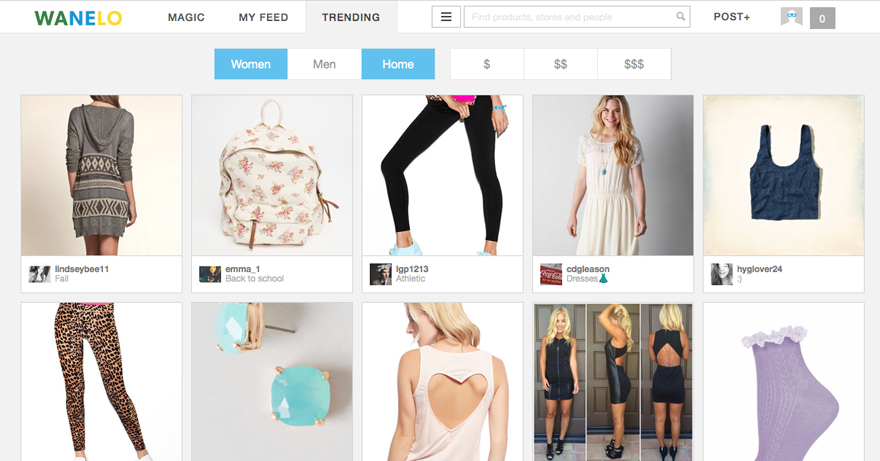Your content marketing plan likely includes a combination of a blog, eBooks, whitepapers, video content, social media, and possibly a few other mediums, but one of the most compelling forms of content is created by your consumers. It’s emotional, passionate and powerful. Businesses have a huge opportunity to leverage user-generated content, and here are a few brands seeing success with this strategy:
BaubleBar
BaubleBar’s Co-Founder Daniella Yacobovsky recently spoke at National Retail Federation’s annual Retail’s BIG Show and shared how incorporating user-generated content is a highly effective tactic for BaubleBar. The brand currently integrates selfie snapshots on their website with the customers sporting their various sparkly baubles in a shoppable slideshow. Customers simply share their pic on Instagram or Twitter using the hashtag #BaubleBar or upload it directly to the website. According to Yacobovsky, “A third of site visitors engage with it and the conversion rate for those who do is 2.5 times higher than those who don’t.”
What’s great about this approach is that it gives the consumer a realistic view of how the product might look on them and inspiration for how to style the accessory. Much more compelling than just seeing the product on a white background, and consumers are able to relate more by seeing it on an everyday person rather than a model. And giving the consumer even more reason to share, the brand also selects three of their favorites every month to win $100.
I’ve mentioned before the value Pinterest can provide for businesses, and BaubleBar is no exception here. What’s interesting is though, the brand realized that “pins posted by others drove 10 times more traffic than BaubleBar’s own Pinterest content, so to encourage shoppers to pin, they redesigned and emphasized the “Pin it” button on product pages.” Instead of just thinking about your Pinterest strategy as a separate entity, think about how you can make it useful in the shopping experience and integrate into your website. I can’t tell you how many times I’ve visited websites and pinned items to my style board to serve as a virtual reminder, and essentially a trail of crumbs to where I can buy the product when I’m ready.
Juicy Couture
To promote its new sports apparel product line, Juicy Couture has engaged with the photo-sharing platform, Snaps to get consumers involved. Snaps is similar to Instagram but allows consumers to edit and add graphic content to their photos. The app has a two-fold purpose for the Juicy Couture brand: to allow consumers to add Juicy graphic elements related to fitness and working out, and share with friends and family, as well as try on Juicy Couture Sports product to see how it looks on them via their mobile device.
The method is effective in branding the images beyond just a hashtag connection and gives the consumer the chance to virtually try on a product, but the user-generated content has potential greater than just the selfie.
Warby Parker
I’ve praised Warby Parker in previous posts for their genius marketing efforts, and this may not be the last. The online eyewear brand with a home try-on program wholeheartedly believes in word-of-mouth marketing has found a way to incorporate user-generated content. The brand encourages consumers to use their social network to help in the selection process of their perfect frame by posting a pic of themselves wearing the various options on Instagram, Twitter or Facebook. Warby Parker’s Co-founder and Co-CEO, David Gilboa, says, “Customers who post photos of themselves in frames are buying at twice the rate as those who don’t.”
It doesn’t have to be just about promoting the product when it comes to utilizing user-generated content, it can also benefit promoting the overall brand.
Nike
While I may be a marketer, I’m no stranger to my own contribution to providing user-generated content. In 2013 sports apparel brand, Nike carried out one of the most creative initiatives which I was lucky enough to be able to participate in, which resulted in a community of individuals sharing content like you wouldn’t believe…all for a great cause. Nike organized a Women’s 10k event to raise funds for The Leukemia and Lymphoma Society, oh and did I mention it was all virtual? Given the fact that there was no specific destination for this event to take place, you might think the participation would be low. Think again though.
So how did it work? Everyone had to register and pay the $40 entry fee. Each runner had to commit to running a 10k distance (6.3 miles) over a 2-day period (March 9th or 10th) whenever and wherever they chose—trail, track, road or gym—using the Nike running app to record their efforts. In true race fashion, each runner received a technical race shirt (Nike branded of course), with a blank space for runners to write in the various reasons why they run…for fun, for a cause, for those who can’t, just to name a few. Runners were then encouraged to share their route and run using the hashtag #letsturnitup.
Participants professed great satisfaction with running for a worthy cause, and over the course of the two days, runners logged 29,524 miles on the Nike running app, and filled Nike’s Instagram, Facebook, and Twitter news feed full of stories of individuals and groups participating in the run. Not to mention, raised almost $50,000 for LLS.
Many runners had never used the Nike running app and were exposed to a new run tracking method, at the same time feeling the reward of accomplishment. And while the event may have been virtual, that day connected thousands of individuals through social media. Well done, Nike.
While the brands I mentioned may have big marketing budgets, small brands and entrepreneurs can successfully utilize user-generated content without a significant investment, but with a sound strategy.
Photo Credit: The Real Estreya








